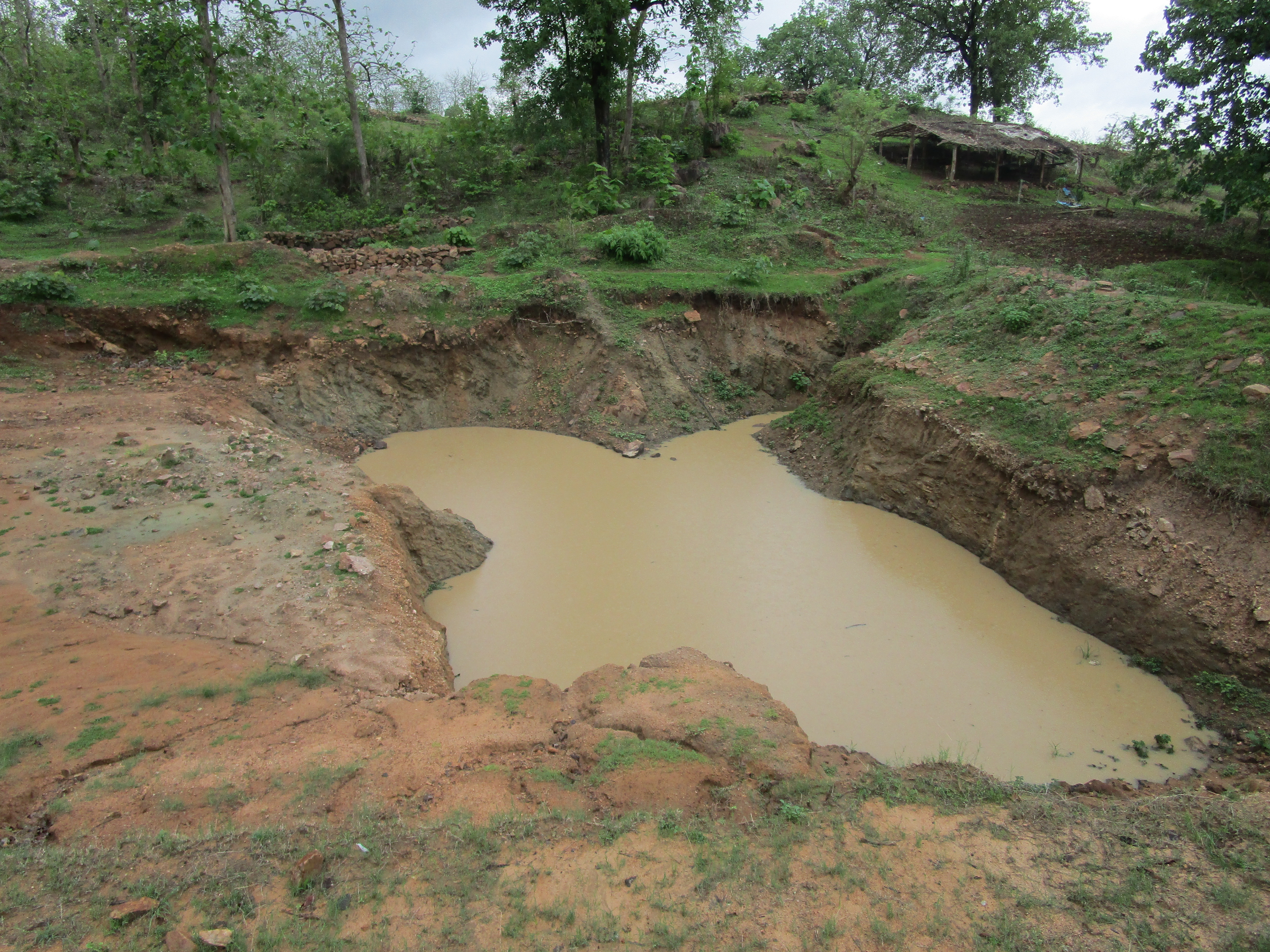By Apoorva Nandwana*
Madhya Pradesh is called ‘The Heart of India’—the tagline is based on the state’s location and was popularized by the state’s tourism board. The campaign made me keen to visit the state, for the last many years. I was therefore extremely fortunate that during my internship with the Watershed Organization Trust (WOTR) I finally got an opportunity to do just that, that too not as a tourist or a traveler but as a young researcher keen on studying the water management scenario of villages in two districts of Southern MP—Seoni and Chhindwara. The visit was undertaken in July 2019. My study was focused on farm ponds and what benefits they had for agriculture. Our first stop was the village of Atarwani in the Kurai tehsil of Seoni district, which overlaps with the Pench forest area. The village has a population of 442, with the majority of the people involved in agriculture. It has mainly small and marginal farmers.
Surface ponds
In Atarwani, the structures which grabbed my attention were the numerous surface ponds, built in land depressions to collect the surface runoff, built with an outlet to drain off the excess flow. On asking the farmers what they call these ponds, they laughingly replied “Dabra Dabri”! These structures have been quite beneficial for the farmers as they do not take up much land. They store water till the Rabi season and use it when there is a dry spell. On asking a farmer if the dabra-dabri takes up precious cultivable land and hamper the productivity, he replied “Agar pani rabi tak hu toh hum dusre crops ugaah sakte hai jisko kam pani lagta hai, zameen khali rakne se toh nuksaan hi hai” (If we get water till the Rabi season, we can grow crops which requires less water and can earn much higher than if the land was left bare). This signifies that the farmer is willing to use a part of his land to store water and retain the rest for agriculture.
The scenario in Karaghat Kamti
Traveling further down 70 km, from Atarwani to the Chhindwara plateau, the scenario in the village of Karaghat Kamti of Chhindwara district is quite different. Farmers focus on horticulture like orange plantations. There is not much investment in livestock as compared to the villages of Seoni and on questioning them, the reason was that the major investment goes into fodder procurement and the returns on it are not lucrative. Like countless villages in India, I found the village to be highly dependent on rainfall. Deficient monsoons can hamper agriculture as well as the recharge of earthen check dams (ECD), ponds, and groundwater. This was visible from the dried orange trees visible on many farmers’ plots, which were left unattended due to the unavailability of water. The rain usually comes knocking by the second week of June, but this year it got delayed to the first week of July further delaying the sowing of paddy seeds.
On our way to one of the individual farm ponds, I interacted with the farm pond owner Sheshrao Dhurve. Mr. Dhurve, a farmer, answered our questions patiently and then went on to explain the construction of the pond to allow runoff water from the farms to drain into the pond along with streamline of 500 m. Pointing to a Mahua tree, he said, “The water fills up till there, and this water remains till the end of the second cropping season. So wheat and gram are cultivated along with other Rabi crops without the shortage of water. Now, the water lasts until the months of May–June.”
He explained that he took advantage of funds granted through the MGNREGA, under which the project was sanctioned in 2016, and the pond was built in 2017 with additional monetary support from the panchayat. He now also practices pisciculture and earns an extra Rs. 30-32,000 Rupees per year thus giving him a total income of around Rs. 60,000, from Rs. 30,000 per year approximately in 2015.

On describing the water usage in summer months, he said that he irrigates the orange trees with pipeline water from the pond and explains “Pani paryapat hai isliye drip vala system apan apnate bhi nhi, drip vala jaha pani ki kami hai vaha kaam aata hai.” (The water is enough for my use. That’s why I don’t use drip system; the drip is only used where water is less). On asking him if he can grow more if he utilizes the water wisely, he claimed,” Itna pani bachta nhi hai ki ek aur kheti lele” (There is not enough water left to take another crop). The crux of the issue, he explains, is that it is not enough to build just the water harvesting structures. “The key part of management is the effective utilization of stored water. Farm ponds are only useful if the management of water is given due importance, through measures like drip and sprinkler irrigation,” he signs off.
Importance of farm ponds
Thus, from these examples, it can be seen that the farm pond has proved to be of importance in rainfed and semi-arid regions in India. The small area of the farm pond can be filled within a couple of rainy days and this can last through the dry spells, thus making it an attractive proposition. Farm ponds, based on my limited observations, can play a major role in conserving water and thus indirectly contributing to agriculture and food security. The key aspect is to combine building farm ponds and similar water storage structures with efficient and effective management of the water stored there. This is the only way that a more water-secure future can be ensured.
*The author was an intern with the Watershed Organisation Trust’s Pune office





